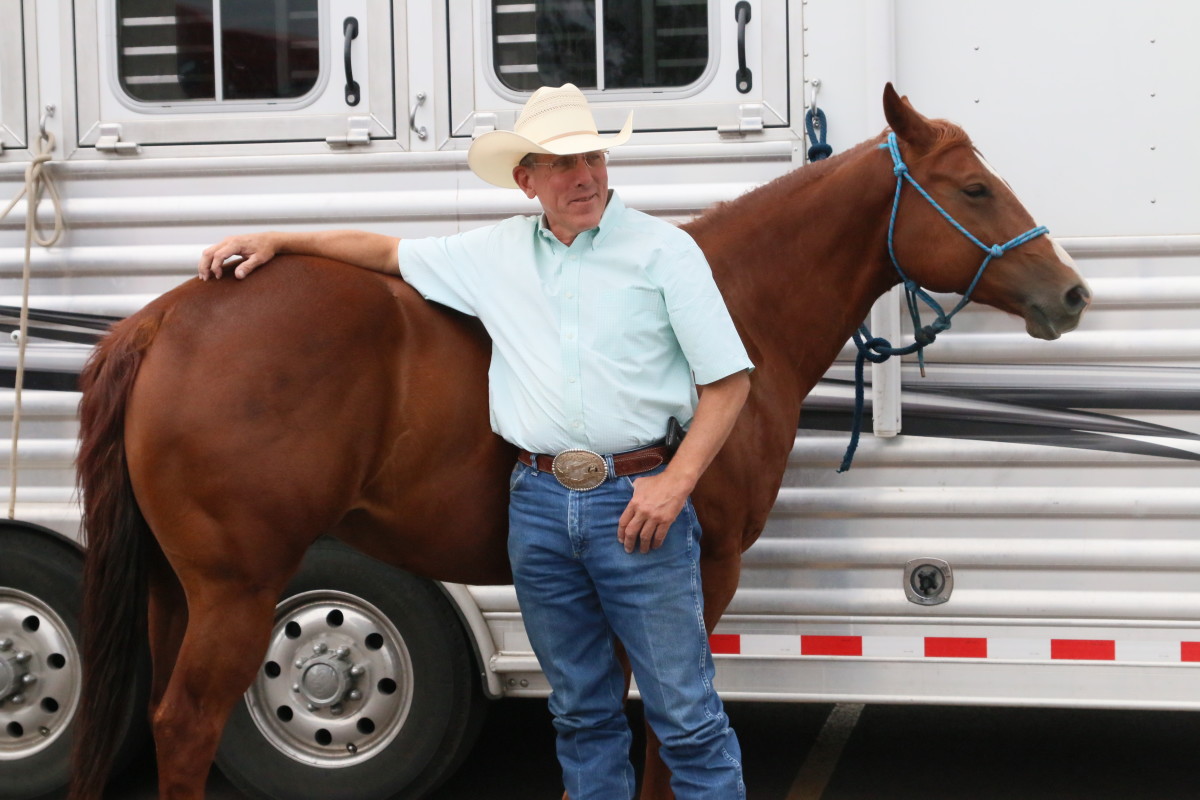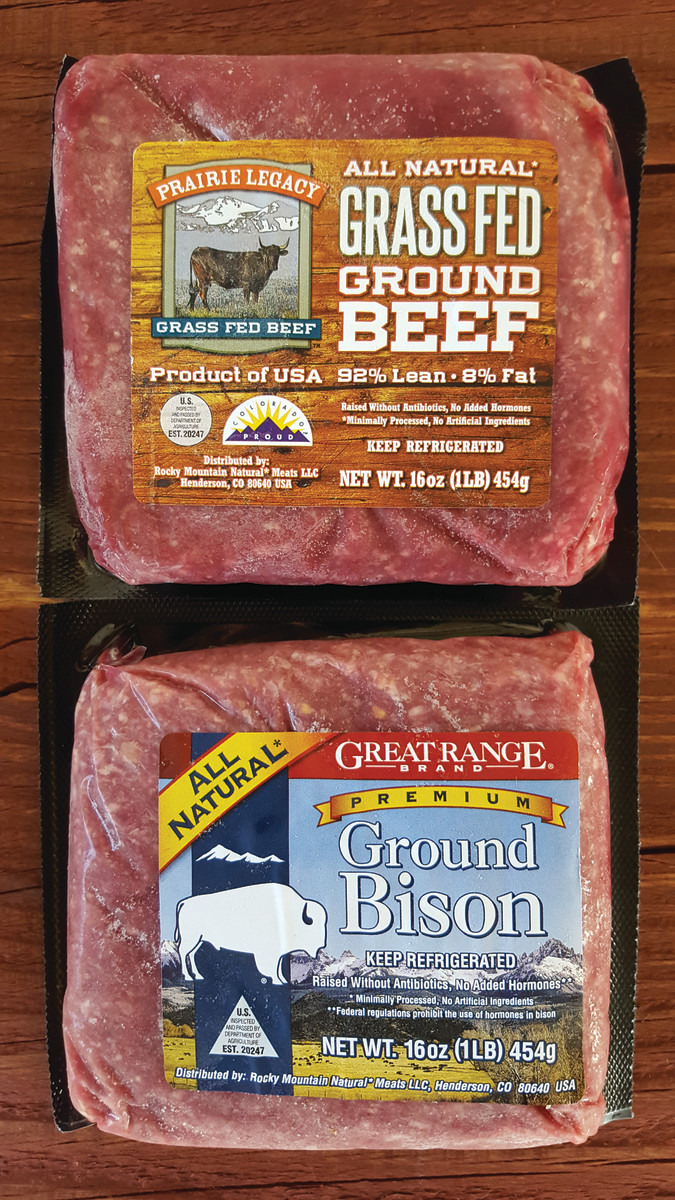Originally from New Jersey’s farm country, Bob graduated from West Virginia University with a degree in animal sciences before taking a livestock management job on an Angus ranch in Montana. Colorado called to him next, where he wrangled a dude string for Sombrero Ranches’ Rex Walker in Estes Park in 1983, until he answered an ad for a ranch manager position at a cow-calf operation in nearby Longmont. What Bob soon came to realize was that those cow-calf pairs weren’t of the cattle kind. They were bison.
Not exactly the life calling he’d anticipated, Bob took the job, partnered up with Laurie—then a horse boarder on the property and now his wife of 33 years—and increasingly discovered that the potential in the bison market was nearly as vast as the prairies they once roamed. In a few short years, Bob and Laurie, who’d been hired by the National Bison Association in Denver, left the cow-calf operation and Bob, in 1986, founded Rocky Mountain Natural Meats.

“It wasn’t like a light bulb moment when we thought this is going to be our career. It was just a means to an end. We started selling meat and our idea was to put a quality piece of meat in a box every day and stand behind it, and that was kind of new for the bison business.”
Bob and Laurie describe the bison and cattle markets as non-competitive as bison numbers hardly register in comparison. Bob approximates that, compared to the 100 million cattle in the United States, there are 400,000 bison on the entire North American continent.
“In the beef industry,” Bob explains, “they know a lot about genetics, a lot about expected progeny differences, and all that stuff, and we’re kind of making it up as we go along in the bison industry. So, from a marketing standpoint, it’s like the Wild, Wild, West. It’s up to you to sell your product.”
Bob rises to this challenge from the bottom-up, recognizing the need for a stable foundation—strong relationships with quality bison producers—to support the sales growth and value increases the industry has seen on a mostly consistent basis. He’s gone from a one-man, sales-and-marketing, packing, and distribution operation to running a 100-employee plant in Henderson, Colo., that handled everything except the slaughter process.
Certain that there was only one weak link left in his business’s chain, Bob went to work.
“For food safety reasons, we got serious and opened our own slaughter facility in Brush, Colo., in April 2013. Now we have a closed loop and we like to brag about the fact that the animals we buy are all harvested in Brush and processed in Henderson, and nothing goes into Henderson that didn’t get harvested at Brush. When it comes to raw product, we don’t buy meat in a box from anybody.”
It’s Bob’s unwavering commitment to getting things done right that also makes him a man to beat in the roping arena. Proper preparation and groundwork have led to a number of successes for Bob, including winning the consolation round at the #10 World Series of Team Roping Finale in Las Vegas in 2010 and the Incentive at the 2012 Reno Rodeo Invitational Team Roping, with partner Matt Schieltz on the heels each time. Most recently, Bob, with heeler Lory Merritt, took the number two spot in the #10 at The Daddy in Cheyenne this past July.
“That’s why I love the practice pen,” Bob pronounces, revealing that the importance of a solid foundation is no less valuable in the arena than in the meat industry. “One of the fun things of this whole deal for me is trying to make those horses work right. Those horses have to be there for you. I see these guys at these ropings with a horse that doesn’t want to stand in the box and there’s a lot of money on the line.”
Bob, a 5 header, and Laurie, a 3 heeler, raise and run their own Corrientes and practice together on their Fort Lupton ranch—another venture they committed to with blood, sweat, tears, and a large dose of humor, until it became the haven they enjoy today. They raised their two children—Michaela and Owen—in the rodeo tradition there and have just recently started feeling like they can step away from home and the business to travel and rope.
“It’s a lifestyle,” Bob says of the role team roping plays in their lives. “I don’t know what else I’d do.”
The sentiment calls back to Bob’s beginnings in the bison business, when he was fresh off of cattle ranching in Montana and dude-stringing through the mountains bordering Rocky Mountain National Park.
“For me, at the time, the biggest downside to bison was you don’t really get to use a saddle horse. There’s a relationship between horses and cattle that is a uniquely Western way of doing things in the world, and it’s really cool. I just love that.”
That love may now be requited in the roping arena, but that’s not to say that 20-something-year-old Bob never put his cowboying skills to the test with a bison.
“I roped one once,” he recalls of a young bull that ended up on the wrong side of the fence. “I roped him around the horns and dallied on this little heel horse, and I was like, ‘Now what? Is he going to do a 180 and come boiling down the rope?’”
It was an experiment that ended well for all involved, with the bull staying at the end of the rope and Bob able to run him into a squeeze chute where he could recover his nylon, but Bob knew then he wouldn’t test the limits of a bison on a rope a second time.
“I got away with it and I wasn’t going to do that ever again,” Bob says, acknowledging the luck of that day.
Laurie takes the opportunity to explain why, in addition to the obvious and absolute wreck that could result from dallying off with an angry bison at the end of the line, roping bison is nothing short of a bad idea.
“Bison have a really big wind pipe and it’s really close to the surface,” Laurie says, using her hands to demonstrate the far greater circumference of a bison’s wind pipe compared to that of cattle.
It’s a design feature that allows the animal to consume enough oxygen to run for great distances, but, like any true Achilles heel, also makes them shockingly vulnerable.
“So if you ever roped them around the neck,” Laurie continues, “you could kill them. You’d crush that wind pipe.”
It’s no secret that animal welfare is a hot-button topic when it comes to agriculture, but for Bob and Rocky Mountain Natural Meats, there’s really nothing to debate.

“There is a gap that is a mile wide between the consumer and agriculture. Bison are still a wild animal and that’s not something we’re trying to change. Animal welfare is important and we really take it seriously at Brush. It’s a big part of what we do. Those animals need to be handled right.”
Proper stockmanship allows Bob to stand resolutely behind his brand, as does his standard of transparency—a non-negotiable on behalf of the consumer.
Bob values transparency with a capital T, and, as a result, he’s turned down numerous deals in its name. His demand for it not only drives his business, but is also the sole source of his grief when discussing the sport of team roping.
“The roper needs to know what he’s running at,” Bob asserts. “It’s only fair. We’re putting the money up, so we need to know, what are you holding out?”
As a man who prefers to grab the bison by the horns, so to speak, Bob sees the many changes going on in the sport as the perfect opportunity to address the issue—a lesson no doubt garnered from building his own business in an industry that hardly existed when he began.
The work isn’t finished, and though Bob and Laurie find a few weeks in the year to go to ropings and visit with friends, Bob gives no indication of making retirement plans. Rather, he talks about being a part of the major renovations at the National Western Stock Show Complex in Denver so that he can ensure that, in the coming years, the needs of the bison will be met when they arrive each January for the sale, and he talks about the strides being made with the Crow tribe and their ability to be viable and sustainable producers in the market one day.
In short, Bob Dineen keeps his goals—much like a fresh steer coming out of the box—in near sight.
“That’s why you go rope,” he says, circling back to his passion for the sport. “It’s fast and you better be on your A-game, and you better have your mind on what you’re doing.”










